The next stop of the Tour that was relevant to my personal history was one that corrected an error made long ago. At the beginning of my first long tour, twenty-six years ago, I passed through the attractive region of western New York state. I was younger then, of course, and more interested in successfully reaching a high distance target each day, as opposed to seeing as many interesting things as I could. I knew beforehand that my great-grandfather lived in the town of Batavia, today a rather disheveled small city that is the county seat of Genesee County. So I passed through there and thought, So that was it,
and kept on riding. What I now know is that, about 30 kilometers farther west, I also passed though another, smaller, town called Newstead, where two prior generations of my family had lived. In doing so, I would obliviously ride just one kilometer north of the land that they farmed for fifty years, a piece of property located along a road that is named for my family! Clearly, that oversight was something that desperately needed to be corrected during the World2 Tour.
That was the reasoning behind my selection of Buffalo as the starting point for the next section of the Tour, a city not very highly regarded today, but which was one of the most dynamic cities in North America at the time my ancestors lived in the area, from around 1820 to 1900. Indeed, the entire western portion of the state, from the Finger Lakes, west to Lake Erie, was the trendy, happening, locale in the United States at the time. The Holland Land Company, a consortium that owned the entire region, was selling properties at attractive prices, and the recently-opened Erie Canal was bringing a steady stream of customers to the area. Not surprisingly, in such a fast-changing location, with new residents possessing very diverse backgrounds, the region also became a hotbed of Utopian groups, experimental communities, and, notably, religious sects, both old and new, energized by the pulse of the Second Great Awakening. Shakers, Fourierists, Millerites, Spiritualists, and more mainstream religious groups were all present, as was a small, newly-formed group, which would grow to become known as the Mormons. The extent of such developments was so great that the area was given the nickname The Burned-Over District, meaning that eventually the scale of recruitment and evangelism had reached a level such that there were no remaining potential converts to be found there.
Six of my ancestral families, on both sides of my father’s family, would find their way to this region during the first several decades of the nineteenth century. Some of them would become involved with the emerging groups in the area, others would not. Only a few of these separate families ever knew each other when they coexisted in that area, and the others would shortly go their separate ways, until, by chance, they would finally encounter each other, in Centralia, Illinois, decades later.
Samuel Fowler grew up in Western Massachusetts, then found his way to Avon, New York, as a young man, where he married Susannah Hart. They were my fourth-great-grandparents, and their son Samuel Wesley, born in Avon, continued the line. The elder Samuel became a Mormon some time later, probably after the death of Susannah, and was the only one of my ancestors to continue on as a member of that Church for the remainder of his life. His family, including children from his first and second wives, moved progressively westward as the Mormon migration unfolded, though he himself only made it as far as Iowa. Today, Avon is an example of a pleasant, beautiful, and historic town typical of those found in that part of the state. My ride through there during the Tour, however, was less appealing, thanks to obnoxious headwinds and the threat of imminent rain.
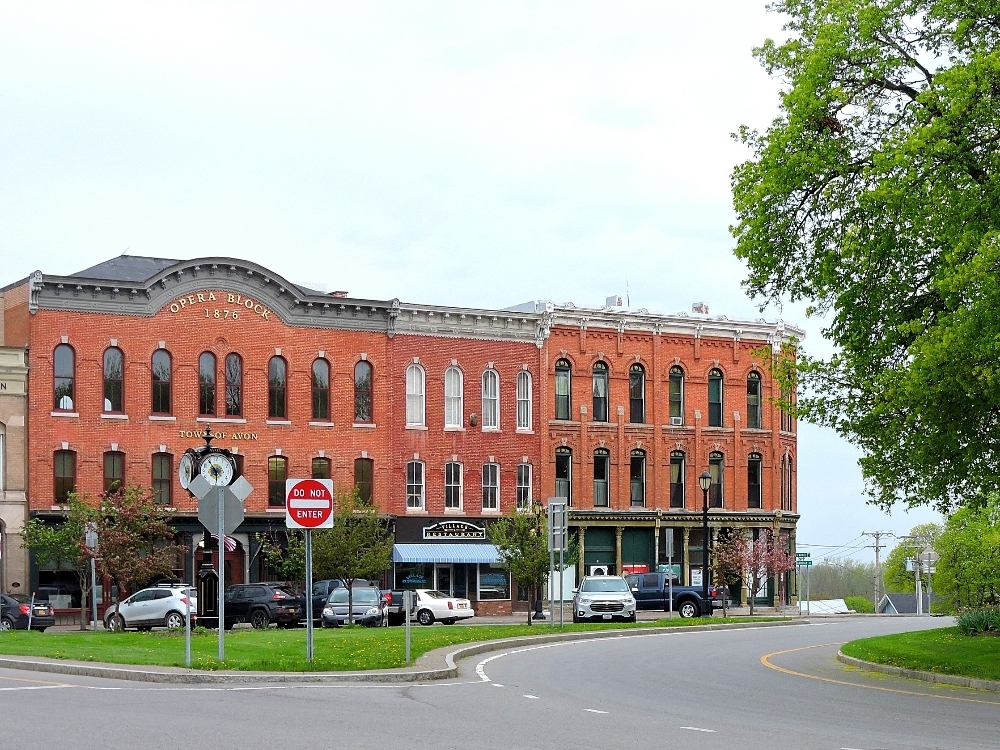
Another of my fourth-great-grandfathers from that area became a Mormon with a somewhat more colorful story. Reuben Hadlock originally came from central New Hampshire, but he also moved to Avon as a young man. There, he too became an early member of the fledgling Mormon church, associating with Joseph Smith, Brigham Young, and Wilfred Woodruff. Though he did not directly participate in developing the specific doctrines of the religion, he was present during that stage of its development. In fact, he used his talents of woodcarving to craft a number of Egyptian-themed woodblocks for printing illustrations in Joseph Smith’s Book of Abraham. Around that time, demonstrating his quirky nature, he began spelling his surname Hedlock
and was the only member of his family to do so.
He also served for a time as the president of the Mormon Temple in nearby Geneseo, New York, and it was while he was there that his daughter Harriet, my third-great-grandmother, was born. Modern Geneseo is an attractive college town, with many beautiful old homes dating from that era. It is a bit of a shame that my family didn’t remain there long, but Rueben’s wandering life was just getting started.
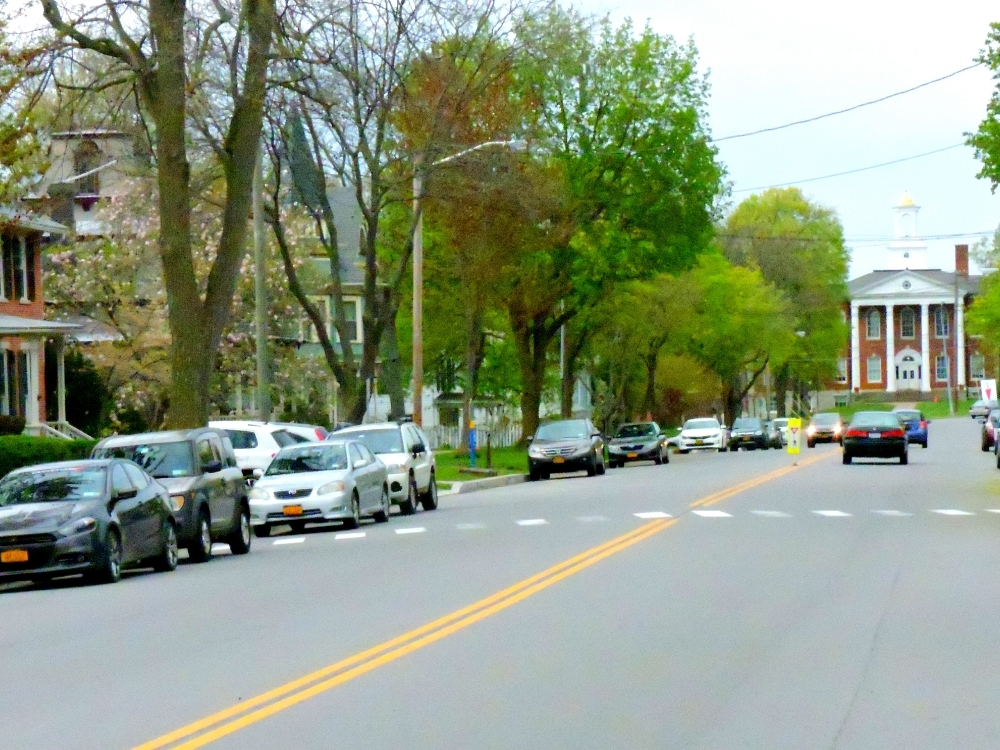
He, being an elder in the Church, did not hesitate to move westward along with his family, following the rest of its leadership. He was in Kirtland, Ohio during the Elders Quorum, and later spent time in the disastrous early western settlement of Far West, Missouri. Some time during that period, his family was shook by the repeated episodes of mob violence directed towards members of his community, and he lost a young son and other members of his extended family.
Later, his family found themselves in the original new city of the Mormons, Nauvoo, Illinois. Things seemed to be going his way for once, but, in a typical manner, that wouldn’t last. Before long he was assigned the job of being an emissary for the Church in England. His duties there involved organizing and provisioning sea passage for English converts to the Church who were migrating to America. His writings revealed that he was not particularly happy there, being separated from his family, and feeling depleted by the dreary weather.
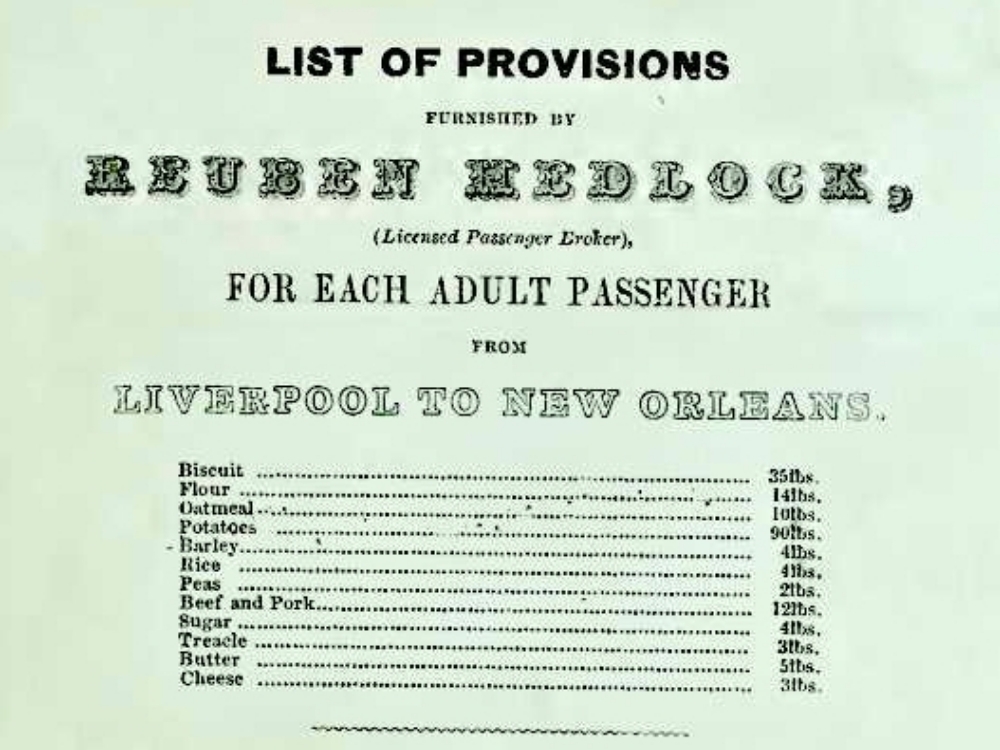
After a year at that job, and another two years back in Illinois, he was sent off again for a second stint in England. This time the posting would last longer than he had bargained for. At some point he was accused of embezzling funds, meant to be used for the transport of passengers, but using them for his own purposes instead. Whether this was in fact true, or not, is unknown, but the Church took the accusations seriously, and discommunicated Reuben. He never returned to America, married an English woman, and his family never saw him again. This was the event that caused his daughter Harriet and son-in-law Samuel Wesley Fowler, who had met and wed in Nauvoo, to leave the Mormon Church.
Though Reuben left descendants only in Illinois, not in New York, some of his cousins may have stayed in the area. Perhaps one of their descendants is now the heir to the Hadlock’s Paint store empire.
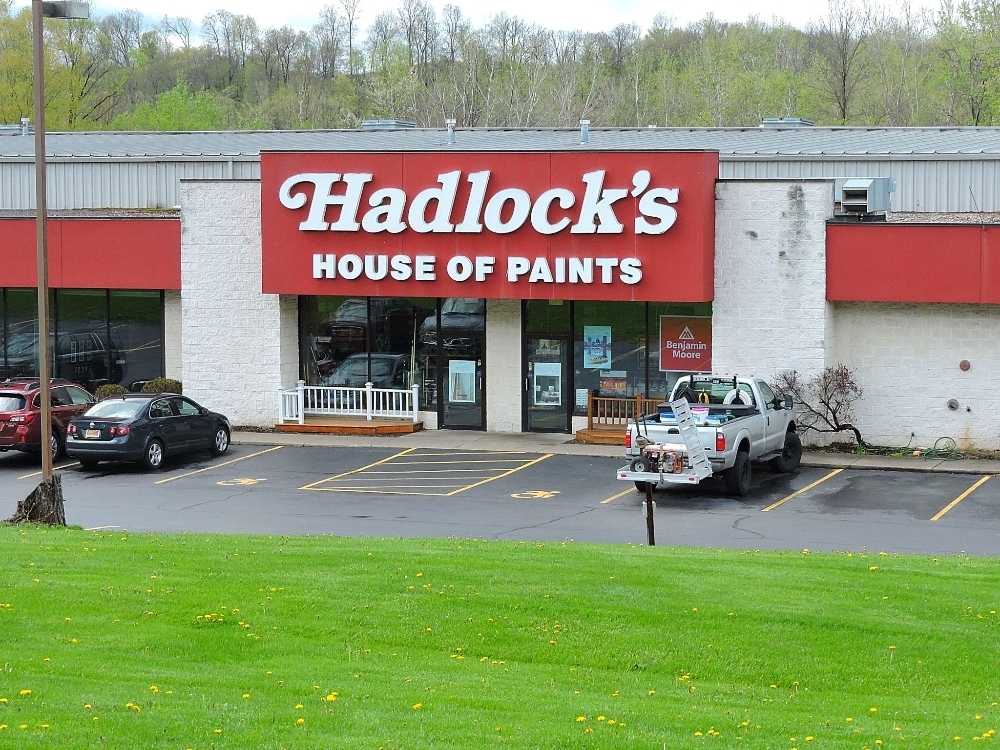
Most of my father’s ancestors originally came to North America in the early Colonial period, starting with the White family on the Mayflower, and continuing to arrive for several more decades. However, the families who were the ancestors of my father’s paternal grandmother were the one exception, arriving much later, in the mid-nineteenth century. The Strang family came first, in 1842, after emigrating from Alsace to Newstead, presumably due to overcrowding, or a general lack of opportunities there. Louis Strang, my great-great-grandfather, was one year old at the time, so the United States was the only home he ever knew. In 1862 he enlisted in the First New York Light Artillery Volunteers. That company participated in many notable Civil War engagements, including Second Bull Run, Gettysburg, Kennesaw Mountain, Atlanta, and Savannah, though it is not known whether Louis was present for all of those battles, or not.
The other late comers were the Yensan family, who came from Mecklenburg, Germany in 1862. The head of that family was Christopher Yensan, my 3rd great-grandfather. Like Louis Strang, he chose to become a soldier for his new home during the Civil War, but, unlike Louis, he was not a young man, enlisting in the 100th Regiment, New York Infantry for three years, at the age of forty-nine. His wife, Dorothy, stayed in Clarence, in Erie County, looking after their six children, while being pregnant with number seven, which, coincidentally, was born nine months after Christopher’s enlistment. During his third year of service, Christopher was wounded during the Siege of Petersburg, and after spending time at Emory Hospital in Washington for recovery, was discharged and returned to his family in New York. Nine months later, the eighth, and last, of Christopher and Dorothy’s children was born.
Both the Strangs and Yensans became well-established families in Newstead, Clarence and the surrounding area, with descendants still living there today. I may have more to say about these families later on, but for now their story ends with my great-grandmother, Sarah Strang, a woman I sadly know little about, except that she worked as a pastry chef. She was employed, at least some of the time, at a Rippey’s Grill, a chain of restaurants in the northeast that was famous for being run out of old Pulman Rail cars.
The fifth family that came to the District was the one that was the most mysterious to me for a very long time. Consequently, their story is long and interesting, and will be saved for the future. For now, their name was Ferguson, and they came to Pembroke, just to the east of Newstead in the 1830s. Their time there was without notable consequence, and only my great-great-grandmother, Hannah, stayed in the area for the remainder of her life.
The final family is the one that shared my surname, the family of John Ayers, my 3rd-great-grandfather. They arrived from Vermont some time around 1838, though John’s older sister, Sarah, and her New Yorker husband, John Ball, preceded them by a few years. Sarah and John Ball were Abolitionists and members of the American Temperance Society, so the general pull of the Burned-Over District may have been what drew them to the area in the first place, though that will never be known for sure. It is also not known whether John Ayers and his wife Hannah Miles Ayers shared those beliefs. All I do know, is that they worked hard at farming, and raising their eight children (nine, if you count their oldest son, who was the black sheep of the family, and who was eventually disowned.)
I feel fortunate that I have been able to find the exact location of our old family farm. Some time after 1840 John purchased fifty acres in South Newstead, and later he, or one of his sons, added another thirty not far away. I also feel fortunate to have been able to bicycle along Ayers Road during this Tour. When roads were built in that area, they were usually given the name of the primary property owner that the route ran past. The image below shows Ayers Road, and John’s family property begins on the right-hand side.
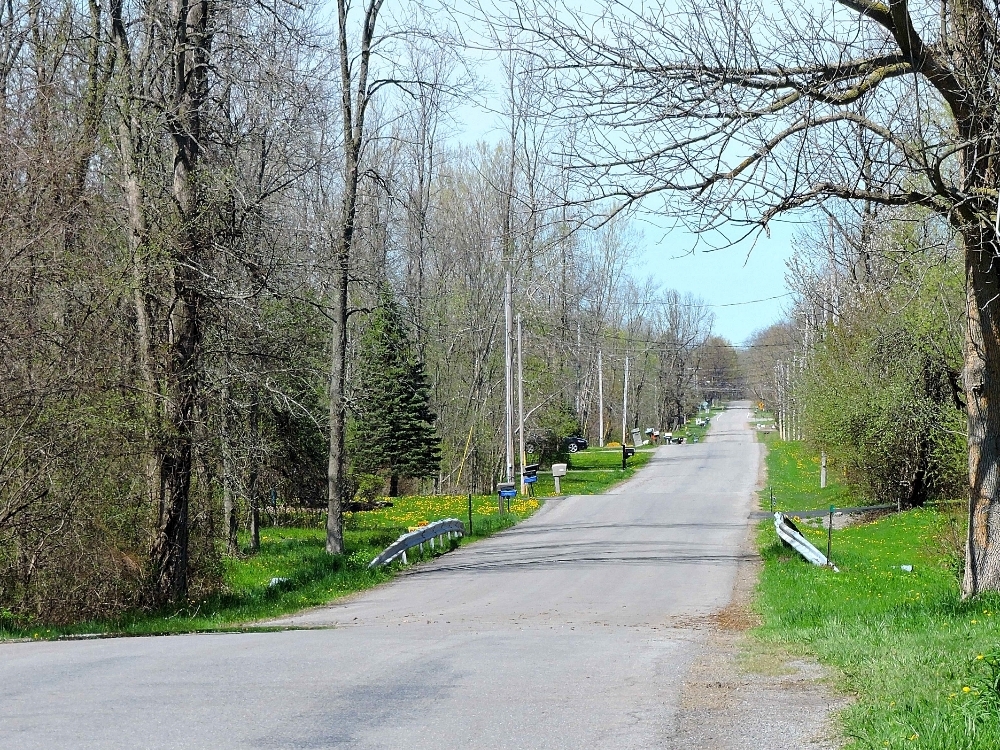
The main part of the farm, where the house was located, was closer to this area. You can see that this must have been very fertile and productive land. Unfortunately, in my opinion, the land has not fared well in modern times, being subdivided at some point in the past, followed by the addition of several Town and Country-style
homes. I would have preferred to see some other sort of, more productive, use, but, of course, I had no say in the matter.
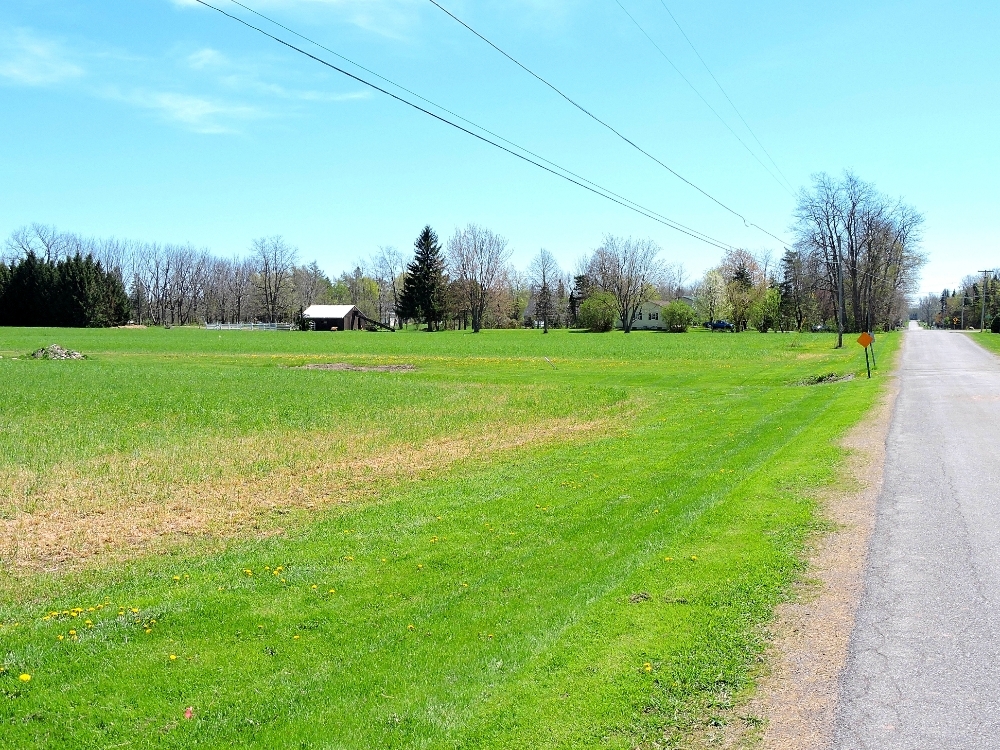
My great-grand-aunt Nellie Ayers married one of her neighbors, John T. Stage. Perhaps they met at this corner?
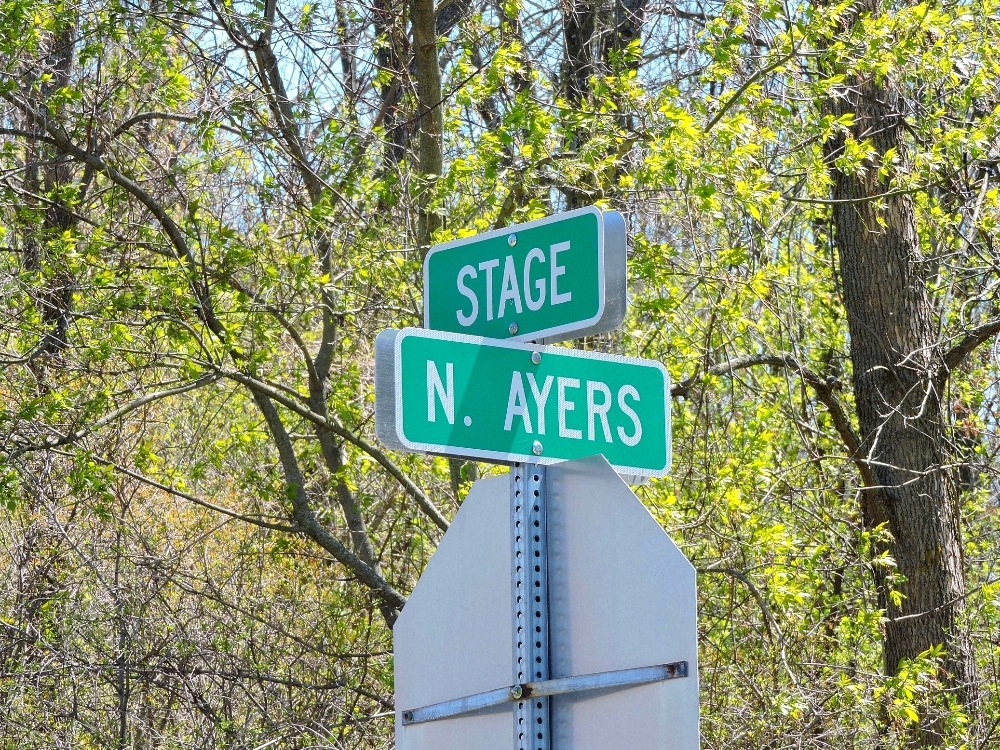
In addition to being a fine area for agriculture, the District is noteworthy, in my opinion, for containing some of the most attractive small towns in the country, many of which were able to retain their original charms, without becoming a cartoon version of themselves, and resisted the tide of sprawl that ruined so many other communities. The main village of the town of Newstead is called Akron, and it is a perfect example of that situation. Below is its main street as I saw it on the Tour, and further down as it appeared in the 1890s. Many of the buildings are still the same, a testament to the quality with which they were originally built.
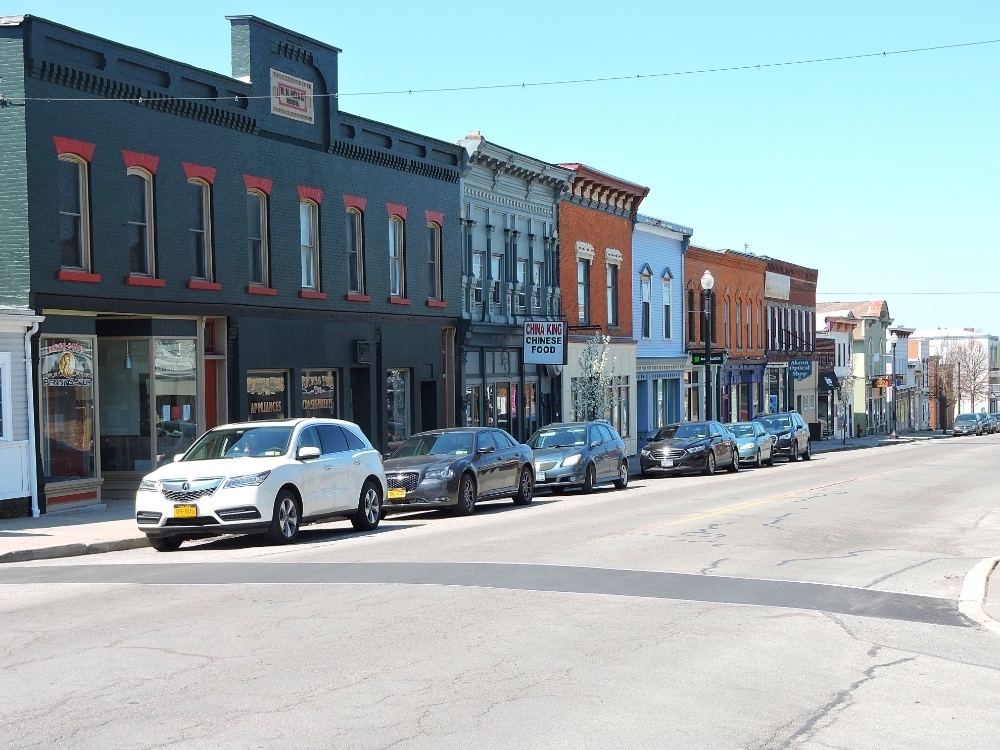
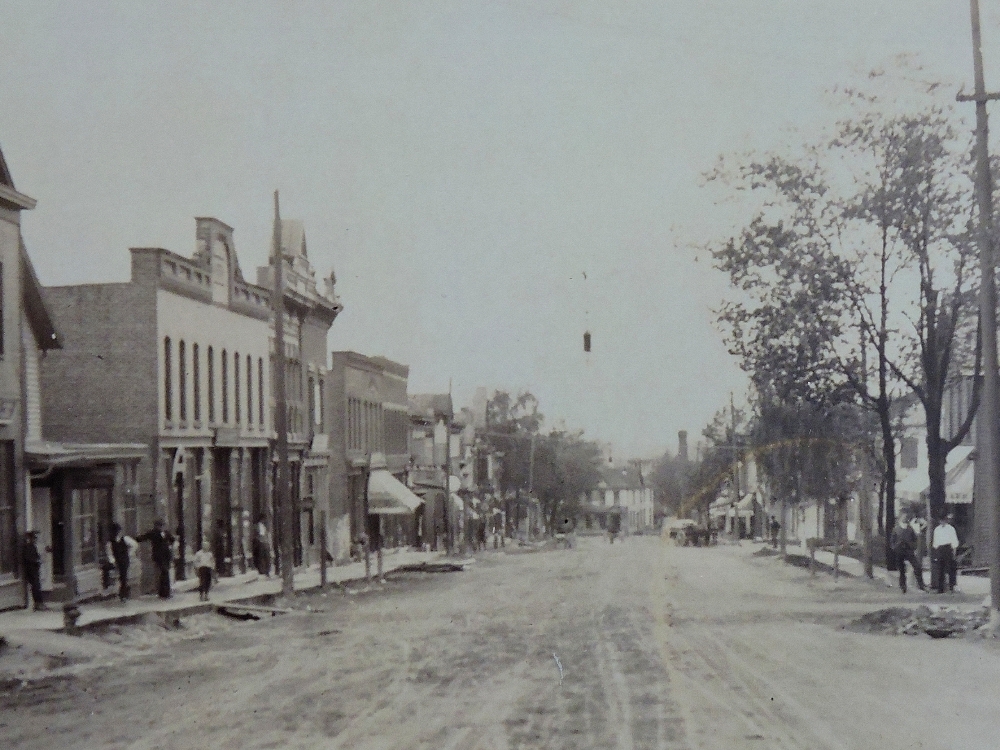
The residential areas are equally well preserved, filled with beautiful homes that have been well cared for, without becoming inaccessible to ordinary people. One notable and unique example is the Rich-Twinn Octagon House, now a museum, which expressed an example of a short-lived trend in home design in the nineteenth century.
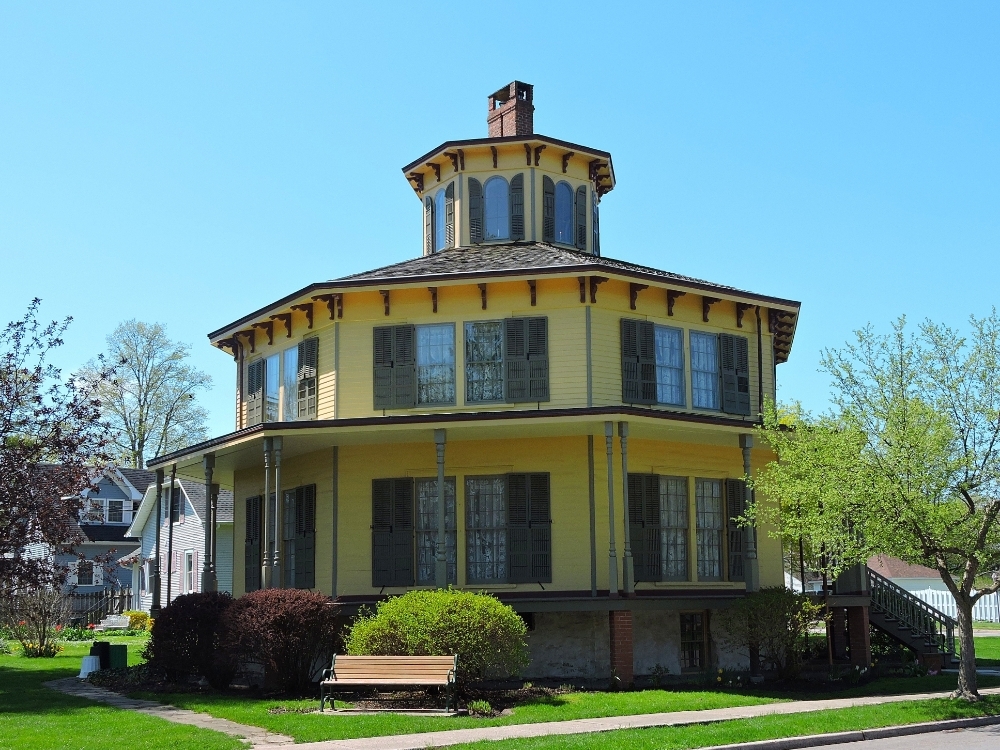
I had hoped to visit, perhaps to partake in a fine meal, as I did in Centralia, some building or structure in Newstead that my family may have also visited many years ago. Unfortunately, the only good candidate, a restaurant that was operating in a building that had been used for that same purpose during the earlier time period, closed down just two months before I arrived. The closest I could come at this time was a private home, which I could only see from the outside, that had once been a school, located a short distance from Ayers Rd, and at which some of the younger children from my family may have attended classes. The pictures below are the home today, and as a school in 1907. That would have been too late for any Ayers children to be enrolled, but one of the boys in the picture was Howard Strang, my first cousin, twice removed.
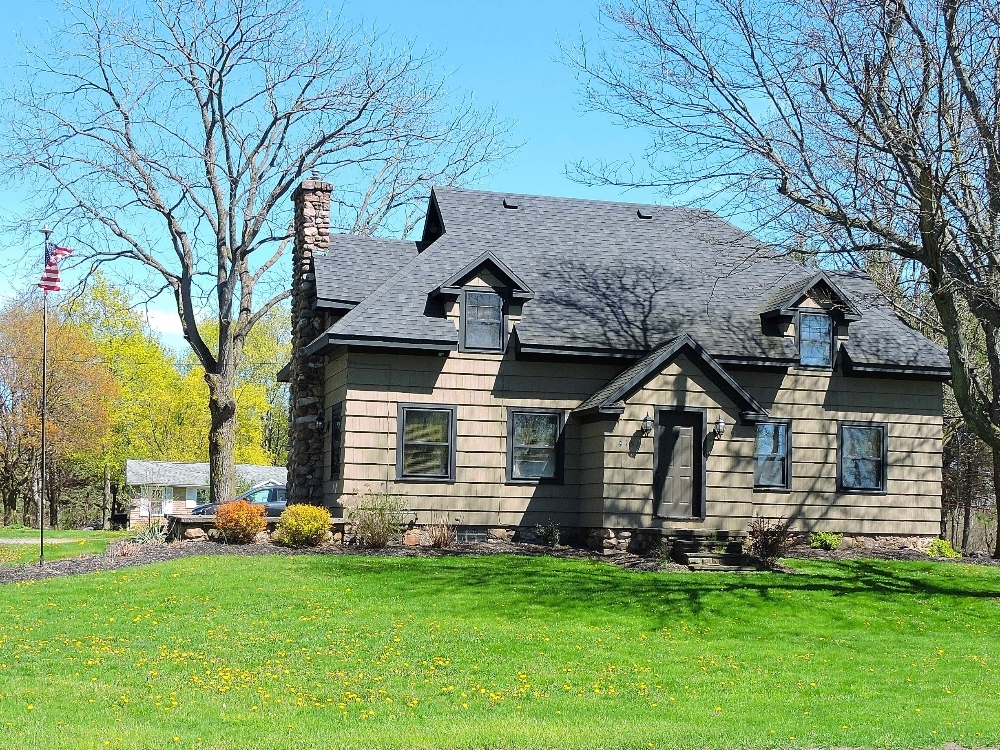
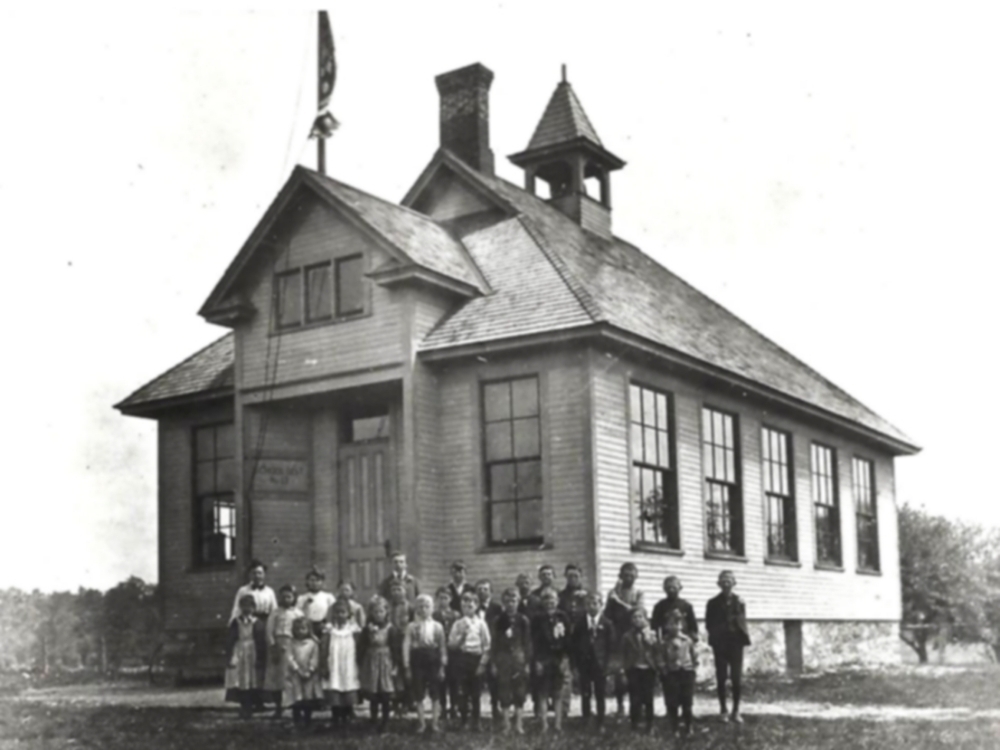
The final image shows my great-great-grandparents, Abial Ayers and Hannah Ferguson Ayers, the last members of my family to have resided on the old farm, taken some time near their wedding day. They are the oldest members of our family for which we have a photograph.
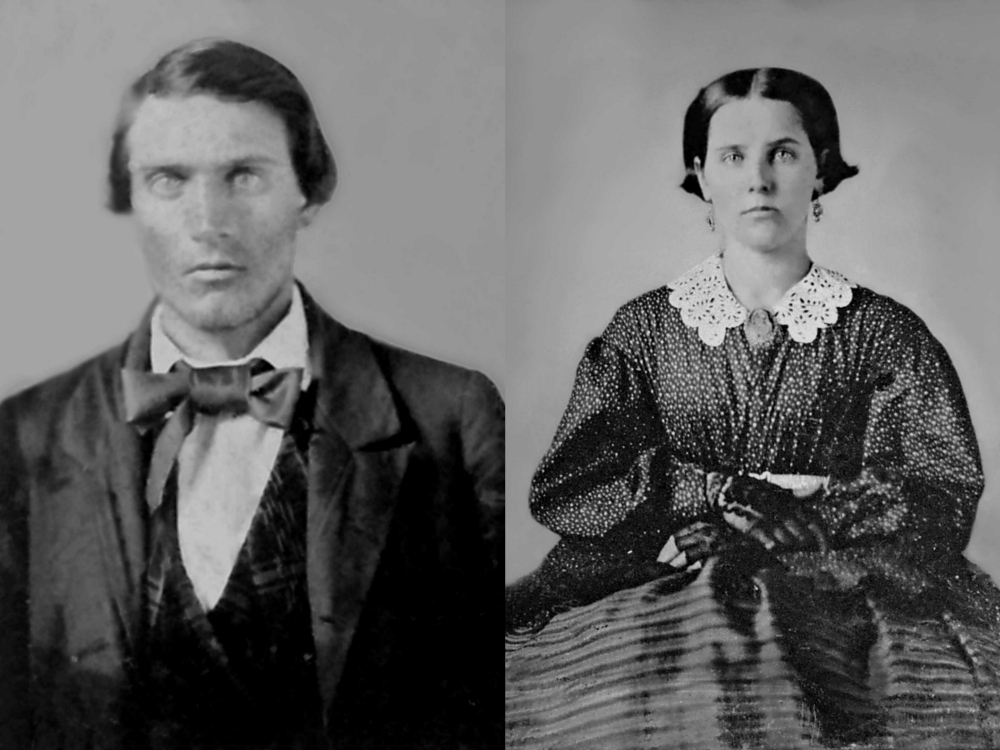
The Burned-Over District was, and is, a beautiful part of the World, with many pleasing places to visit and interesting stories to learn about. Most of my family members eventually moved away, however, and I am not sure that I am entirely happy about that, since a closer connection to that region would feel like an advantage for me. As it is, I am happy to have been able to Tour through the area once, or twice, if you count the time when I wasn’t paying attention.